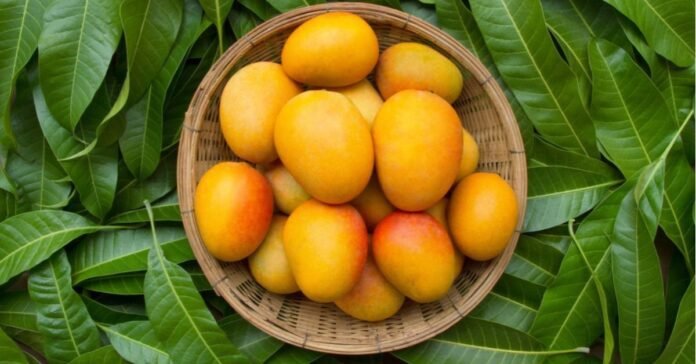Indian mangoes remain unmatched in flavor, aroma, and variety. As summer arrives, markets fill with ripe, fragrant mangoes, drawing fruit lovers from across the country. Mango festivals spring up, celebrating the beloved fruit in all its forms. No other mango variety from around the world can truly compete with the complexity of Indian mangoes. Thai and Sri Lankan mangoes are sweet but lack the depth, while Pakistani mangoes, despite their size, often miss the balance of taste and texture.
For centuries, mangoes have been an intrinsic part of India’s cultural and culinary landscape. Although some believe mangoes are native to the country, history tells a slightly different story. India had local varieties, but it was the Portuguese who revolutionized the fruit’s cultivation. When they arrived in western India, they introduced advanced grafting techniques that improved existing varieties. The much-adored Alphonso mango, known for its silky pulp and deep golden hue, owes its refinement to these methods. The Portuguese influence ensured that the Alphonso developed a smooth, non-fibrous texture and a distinctive aroma, making it one of the most prized mangoes worldwide.
Despite Alphonso’s dominance in exports, India produces a staggering range of mango varieties, each with its own loyal following. Dussehri from Uttar Pradesh is celebrated for its soft, fragrant pulp, while Kesar from Gujarat boasts a rich saffron-like flavor. The Langda from Varanasi remains a favorite for its tangy-sweet balance, and Himsagar from West Bengal is known for its intense sweetness and lack of fiber. Every region offers something unique, from the honey-like sweetness of Andhra Pradesh’s Banganapalli to the citrusy notes of Maharashtra’s Ratnagiri mangoes.
What makes Indian mangoes truly special is not just their flavor but also their cultural significance. Mangoes are woven into traditions, festivals, and folklore. They appear in poetry, religious offerings, and even diplomatic gifts. The Mughal emperors were known for their obsession with mangoes, with Akbar reportedly planting over 100,000 mango trees in Darbhanga. Today, mangoes still serve as an emotional link to home for Indians living abroad, with families eagerly awaiting hand-delivered crates from visiting relatives.
Mango cultivation in India also benefits from the country’s unique climate. The diverse soil and temperature conditions allow for an extensive variety of mangoes to thrive. While Alphonso grows best in the coastal Konkan belt, Kesar flourishes in the arid regions of Gujarat. The Gangetic plains nurture Dussehri, and Tamil Nadu’s hot summers bring out the best in Imam Pasand, a lesser-known but exquisite variety. This geographical diversity ensures that India remains the world’s largest producer of mangoes, contributing to nearly half of global production.
Although Indian mangoes are in high demand worldwide, strict export regulations and climate challenges sometimes limit their availability. Many mango lovers outside India struggle to find the same quality, with supermarket versions often lacking the aroma and taste of fresh, locally sourced mangoes. However, with increasing efforts in controlled ripening and improved transport methods, more people abroad are getting access to authentic Indian mangoes.
Ultimately, no mango can compare to an Indian mango picked at peak ripeness. It is not just about sweetness; it is about the complexity of flavors, the fragrance that fills the room, and the nostalgia it evokes. Whether eaten fresh, blended into a lassi, or turned into aamras, Indian mangoes remain in a league of their own. While Alphonso enjoys global fame, the true richness of Indian mangoes lies in the astonishing variety that continues to surprise and delight with every season.
The charm of Indian mangoes extends beyond their taste and aroma. Each variety carries a distinct texture and character, making them ideal for different culinary uses. Alphonso’s creamy pulp makes it a favorite for mango-based desserts, while the tangy sweetness of Langda enhances chutneys and pickles. Dussehri, with its smooth flesh, is perfect for eating straight off the seed, and Totapuri’s slight tartness lends itself well to salads and spicy accompaniments. Across India, mangoes find their way into everything—milkshakes, ice creams, aam panna, and even curries, reflecting the deep bond between the fruit and Indian cuisine.
Despite modernization, traditional mango-picking methods are still widely practiced in India. Farmers handpick mangoes at just the right time, ensuring they ripen naturally without artificial interventions. Unlike mass-produced, chemically ripened mangoes often found in supermarkets abroad, these hand-harvested mangoes develop their full flavor over time. The patience and skill required for growing and harvesting mangoes add to their uniqueness, making each fruit a product of care and expertise.
Mangoes also play a key role in regional festivals and rituals. In South India, mango leaves are strung together and hung at doorways during celebrations, symbolizing prosperity and good fortune. In Bengal, mango blossoms mark the arrival of spring and are used in religious ceremonies. During summers, families gather to savor mango feasts, where generations bond over bowls of chilled aamras and freshly cut slices of the season’s best produce. The experience of eating mangoes is more than just a culinary delight—it is a moment of nostalgia, a celebration of summer, and a reminder of India’s deep-rooted love for the king of fruits.
With changing climates and increasing demand, farmers and agricultural scientists are working to ensure the sustainability of mango cultivation. Hybrid varieties and improved storage techniques are being developed to extend the fruit’s availability beyond its peak season. However, the essence of mango season remains unchanged—when the first crates hit the market, excitement builds, and mango lovers rush to get their hands on their favorite varieties. No matter how many global mango varieties exist, none can capture the magic of India’s mangoes, which continue to reign supreme, season after season.

